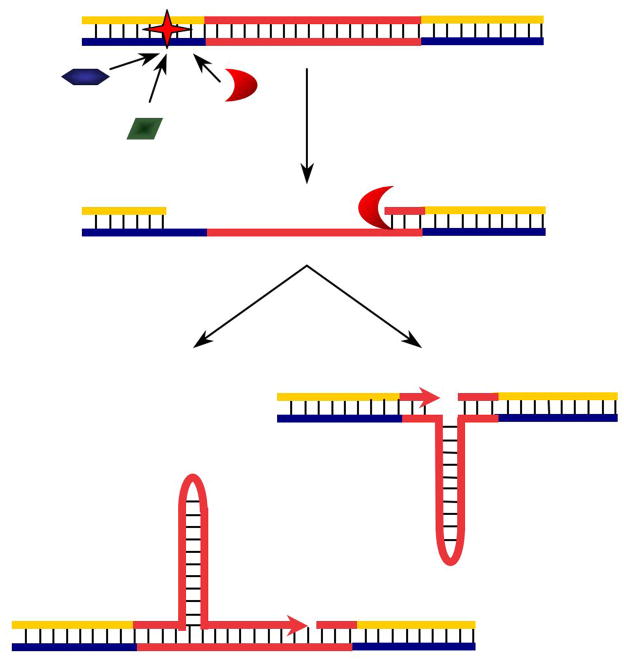Figure 1.
“Excision-repair stimulated hairpin/slippage structure formation” model. In this model, (1) DNA damage (shown as a star) occurs near (or within) a non-B DNA structure-forming sequence (shown in red), recruiting the DNA repair machinery. (2) Processing of the damage by repair enzymes (indicated as various shapes) exposes a single-stranded DNA region within the non-B DNA-forming sequence. (3) Non-B DNA structures (such as a hairpin as shown in the figure) can form at the newly synthesized strand, which causes expansion of the sequence, or at the template strand leading to deletion of the sequence.

